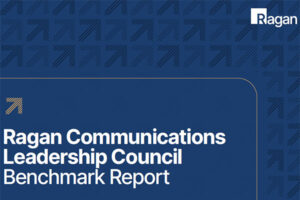How internal communications will change again in 2021
Think multi-channel and measured.

With the unusual events of 2020 in hindsight, we can only yet imagine what is in store for 2021. Given the trends, we may expect more weirdness and continued challenges for corporate communicators and employees alike. Evolving crises, changing plans, and executive decisions will have to be made, coordinated and communicated quickly.
Certainly, one important question will be, “Are we coming back to the office or staying remote-only?” There is likely a subset of employees who may have already sworn off coming to the office ever again, regardless of the status of the pandemic.
Since the only constant is change, our role as corporate communicators is more important than ever. Here’s a summary of what we forecast for 2021:
- Executives will demand more accurate and objective communications analytics combined with survey results to guide more effective messaging.
- Budgets for communications technology has grown and is shifting to the neglected services to implement it.
- Coordination activities between corporate communications, human resources, and executive management teams will increase.
- Video, both steaming and pre-recorded, will play a larger role.
- More voices and opinions will be heard.
Let’s dive into the details.
Executives demand more from communications measurement.
As digital marketing technologies advance, executives have learned to expect and utilize communications analytics to objectively measure and analyze results. However, internal communications is most often devoid of such metrics and data. Internal teams have also discovered the limitations and challenges of trying to learn and use external tools for internal comms.
The case has been made that employee communications is as valuable as sales and marketing communications, and investments in modern internal technologies inevitably include analytic measurement capabilities to close the gap.
As executives tend to be numbers, process, and outcomes-oriented, when communicators bring more than creativity to the table, they gain a stronger voice and more influence.
For example, every communicator should be able to answer and communicate the following questions:
- Which channels are most effective at reaching and engaging our employees?
- What measures of effectiveness define success?
- Which communications data is most useful in guiding decisions?
- What insights did we learn from last year’s campaigns?
Budget for communications technology and services.
COVID-19 has served as a digital transformation accelerator as the shift to all-digital has been rapid and somewhat chaotic over the past months. The trouble with tools such as email, chat, video conferencing, and intranet sites is they are not one-size-fits-all. They each serve a purpose and are often complementary. Although it might be nice in concept to eliminate one or two, it rarely works in practice.
It’s easier than ever to turn one piece of content into a compelling and more effective campaign through multiple channels:
- Write and post a multi-page intranet article covering all the important details.
- Produce a summary email broadcast with bullets and a link to the article.
- Record a video snippet promoting why someone would want to read it and what they can expect to learn or gain.
- Post the video and links in your Teams channels.
As employee communications focuses on what’s new and what your people need to know and do, a multichannel, measured approach is the future. Communicators must create content and reach employees where they are, and at the same time, balance the effectiveness of repeating important messages without becoming noisy annoyances, old news, or information overload. This requires data and analysis.
In many companies, you have most of the digital communications tools you need—it’s the deployment, configuration and utilization that’s challenging. What’s missing isn’t the saw, it’s the tool bench, wood clamps, and workspace needed to put that tool to work efficiently.
When it comes to budgeting, think of adding the services, system designs, integrations, setup and training to make the best use of the technology tools your company has already invested in.
You might have SharePoint, but do you have a communications site configured so you can post to it? You might have Teams, but do you have a channel? You have email, but do you have a reach, frequency, attention and engagement dashboard?
More integrated employee communications activities.
The disintegration of the office space and explosion of digital channels, feeds, inboxes, pages and countless others has been a lot to keep up with and created a sense of fatigue. Employees have been on the receiving end of a deluge of information from multiple sources, and many are unsure who they should listen to and what to prioritize.
2021 is the year we must work to reign this in, with the objective for more consistent, thoughtful and coordinated communication distribution within an organization. Such coordination and integration requires planning and participation from all groups who broadcast to employees, including corporate communications, HR, IT and executives. Organizing around a communications calendar and coordinating campaigns and programs will reduce noise and establish clear channels of communication.
Video plays a growing role.
Video production used to be just that, a production. Now, we can all simply turn our camera on and broadcast or record. We have all become more comfortable being a talking head. Certainly, production values such as lighting, backgrounds and sound quality make a difference, yet less polished and “good enough” is more authentic.
As the rise of video streaming and recordings continues across the enterprise, communicators must lead by example. Inside of just writing for your leaders, teach the basics of setting the stage, delivering talking points, and telling stories. Now, when finished writing long content pieces, why not record a quick minute or two of intro and overview?
More voices will be heard.
Where corporate communications was once centralized, today’s digital communications tools are expanding the number of voices that can be heard. Whether it’s chat comments, forwards, or video commentary, expect to have independent, alternative voices gain audiences inside your organization. Expect these to be both supportive and critical. Encourage and support these content creators. Be wary of silencing diverse points of view, and learn from them instead. As employees establish these audiences, you should provide guidance, assistance and recruit them to expand your team’s reach while incorporating their voices into your plans and publications.
Since many are still remote-only, and I don’t see that changing for a while, we are all producing much more digital content. And since the proliferation of tools is increasing, it’s becoming easier for all of us to create content in many different ways.
Clear, compelling, and effective communications is always the goal. In 2021, you will accomplish that by better managing and measuring a digital multi-channel strategy.
Michael DesRochers is the CEO of PoliteMail, an email intelligence platform for Outlook. This article is in partnership with PoliteMail.






